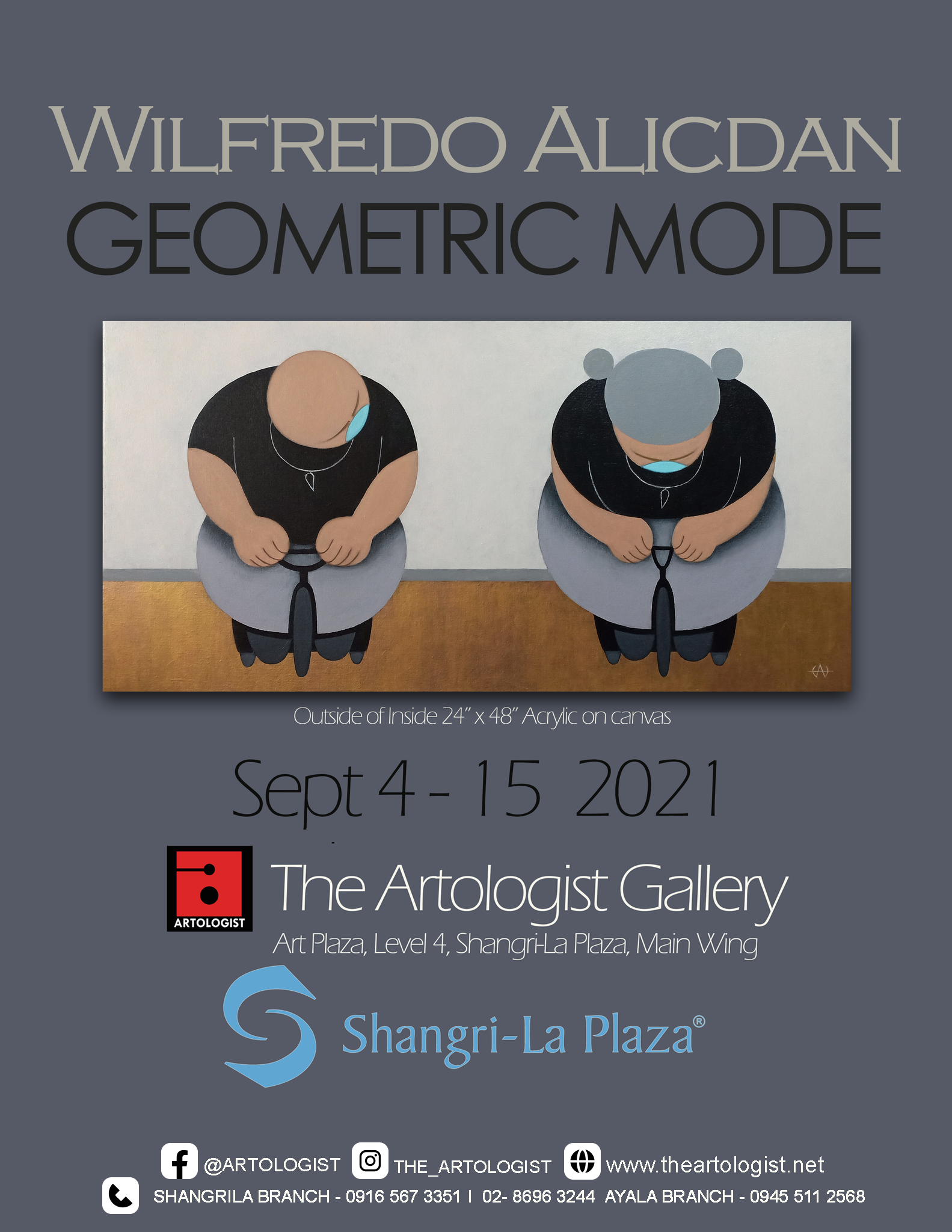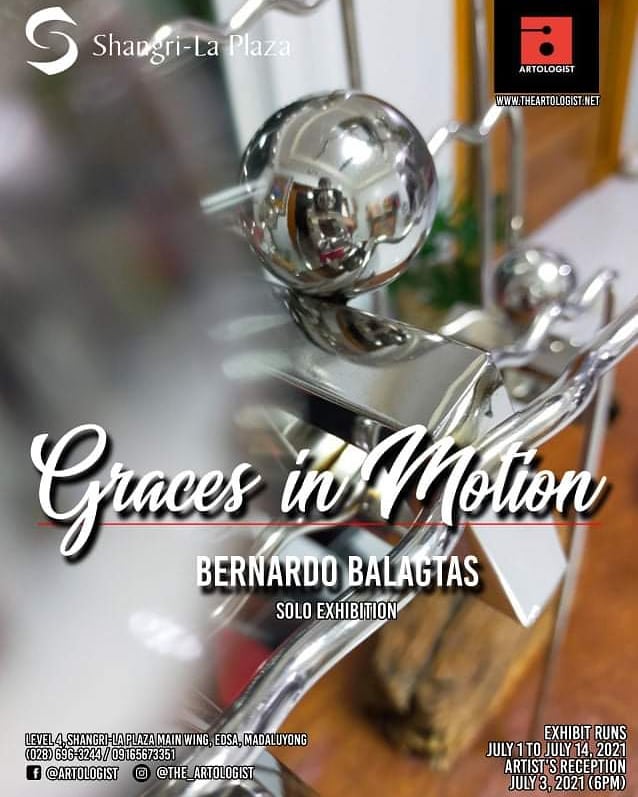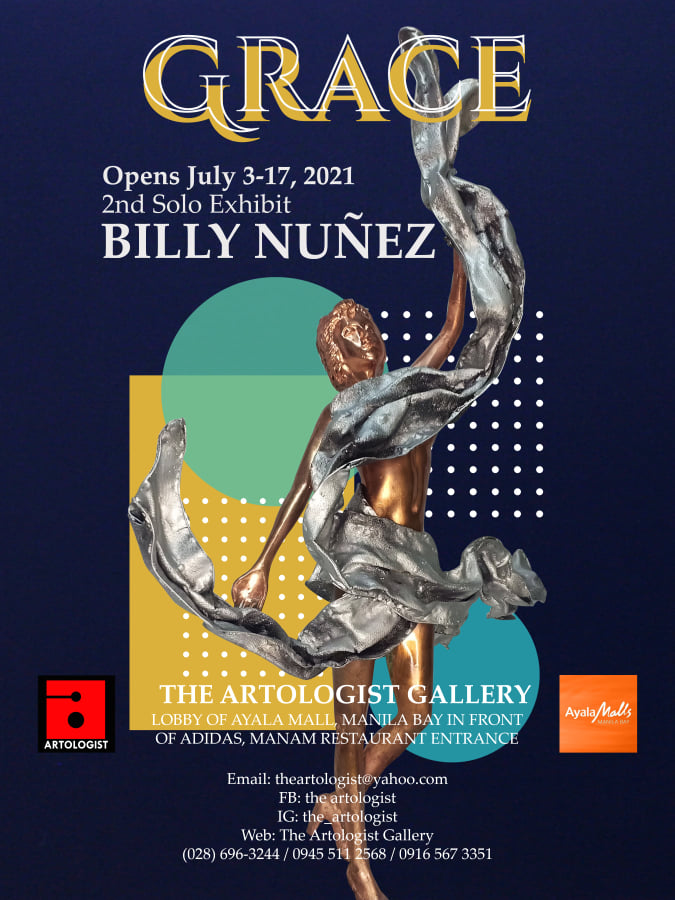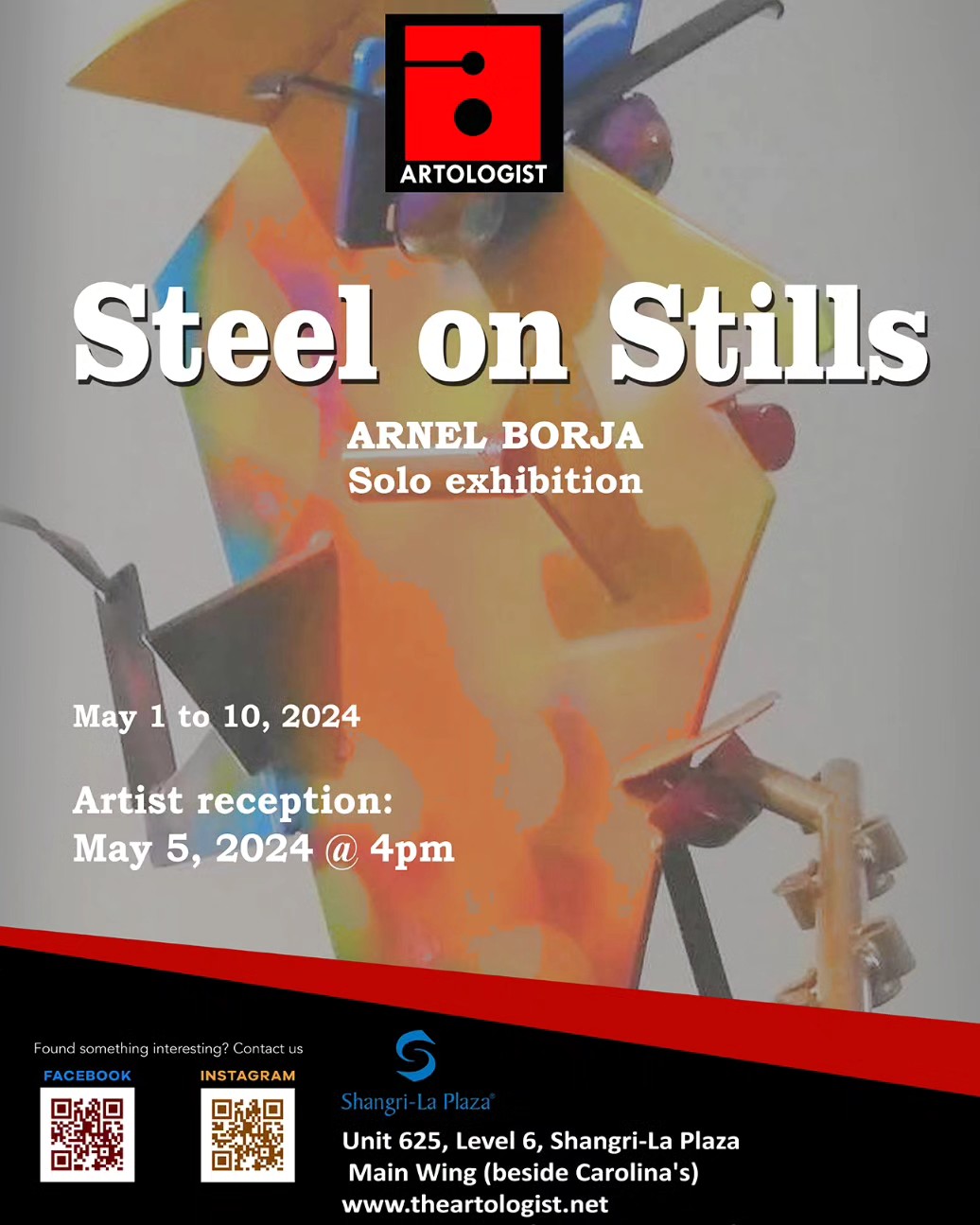
STEEL ON STILLS

A post type for Events in the shop.

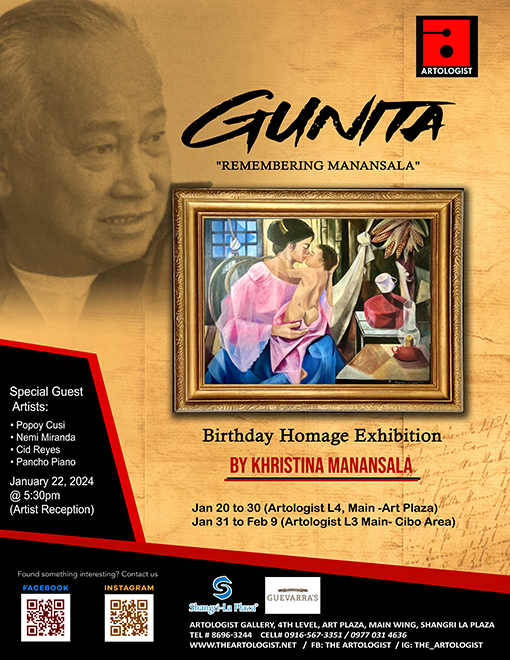
“BIRTHDAY HOMAGE EXHIBITION”
REMEMBERING NATIONAL ARTIST VICENTE MANANSALA
National Artist Vicente Silva Manansala would be 114 years old on January 22, 2024, if he were still alive today. He was born in 1910 and died in 1981, at the age of 71. However, it appears that not so long ago, in the middle of the last century, the name “Manansala” was synonymous with Philippine modernism. Many consider him to be the colossus of the Philippine art scene. Fernando Amorsolo, the first to be declared National Artist, was safely ensconced in history as the exemplar of conservatism, and while National Artist Victorio Edades pioneered the concept of modernism in the country, it was Vicente Manansala – by his superlative draftsmanship and innovative visual expression through his indigenized interpretation of Cubism now labeled “Transparent Cubism” – who gained a stronger, more solid foothold in the idiom that capture the spirit of the age.
Khristina Manansala, Manansala’s granddaughter, is presenting her latest works in an exhibition titled “Gunita: Remembering Manansala” at The Artologist Gallery to commemorate the 114th anniversary of his birth. To join her, she has invited a quartet of artists: Rafael Cusi, Nemi Miranda, Pancho Piano, and Cid Reyes. Collectively, these artists honor the artistic legacy of the Maestro of Modernism.
Manansala was born in Macabebe, Pampanga, and spent his childhood in Intramuros, where he copied the estampita image of the Holy Family and, as he once admitted, drew the many cockroaches scuttling inside their makeshift house within the Wall. He earned a Fine Arts degree from the University of the Philippines. He continued his studies at the Ecole des Beaux-Arts in Montreal, France, and the University of Paris with a UNESCO scholarship grant and a French government scholarship, respectively. Fernand Leger, the French master whose Cubist works featured tubular, conical, cubed, and machine-like, streamlined forms, mentored him for a significant portion of his studies.
When Manansala returned to his home country in the early 1950s, he struggled to make a living from his paintings. In his first one-man show, held at the Manila Hotel, he failed to sell a single piece. Forlorn and defeated, he revealed that he walked home on foot from the Manila Hotel to his home in Reina Regente, a district in Santa Cruz, Manila. The young, embittered Manansala promised himself that one day, collectors would line up to buy his paintings.
Indeed, this wishful dream came true. There was a time when wealthy collectors would travel from Manila to Manansala’s home in Binangonan, where the client would inscribe his name on the back of an empty canvas while waiting for the master’s hands to create his masterpiece. A group of ardent admirers and collectors was formed under the name “Friends of Manansala.”
Manansala’s early works recognized the abject social reality of the deprived and underprivileged, as exemplified by the now-iconic “Madonna of the Slums.” Manansala’s expressive brushstrokes elevated ordinary and familiar sights such as the jeepneys that crowd the city streets or the baroque altar of a dimly lit church to a transcendent scene brimming with Pinoy vitality and folk religiosity. Manansala’s “Pila sa Bigas,” a depressing image of slum dwellers waiting for their rice ration, is also a classic, serving as a damning indictment of social injustice and poverty in the Philippines.
The master, known for his “Transparent Cubism,” used the interpenetration of layers of light and planes, in contrast to Picasso’s and Braque’s multidimensional viewpoints. Furthermore, in his depiction of the human figure, he fragmented his shapes without becoming abstract. The versatility of his technique was best demonstrated in the depiction of his favorite subjects, the “Sabungeros” or cockfight enthusiasts, and the candle vendors. Manansala’s still life paintings of fruits, fish, and vegetables exude a Zen quality, fostering deep contemplation. He could perfect the tones and subtleties of Transparent Cubism. This is demonstrated by his “Whir” series, which depicts a flight of birds, as well as his reworkings of the paintings of Dutch masters Vermeer and De Hooch.
Vicente Manansala’s legacy lives on in the works of younger Filipino artists who are inspired by his work. The show, created by Khristina Manansala, is a loving tribute to the Filipino master whose creative genes live on in his granddaughter’s veins.
******
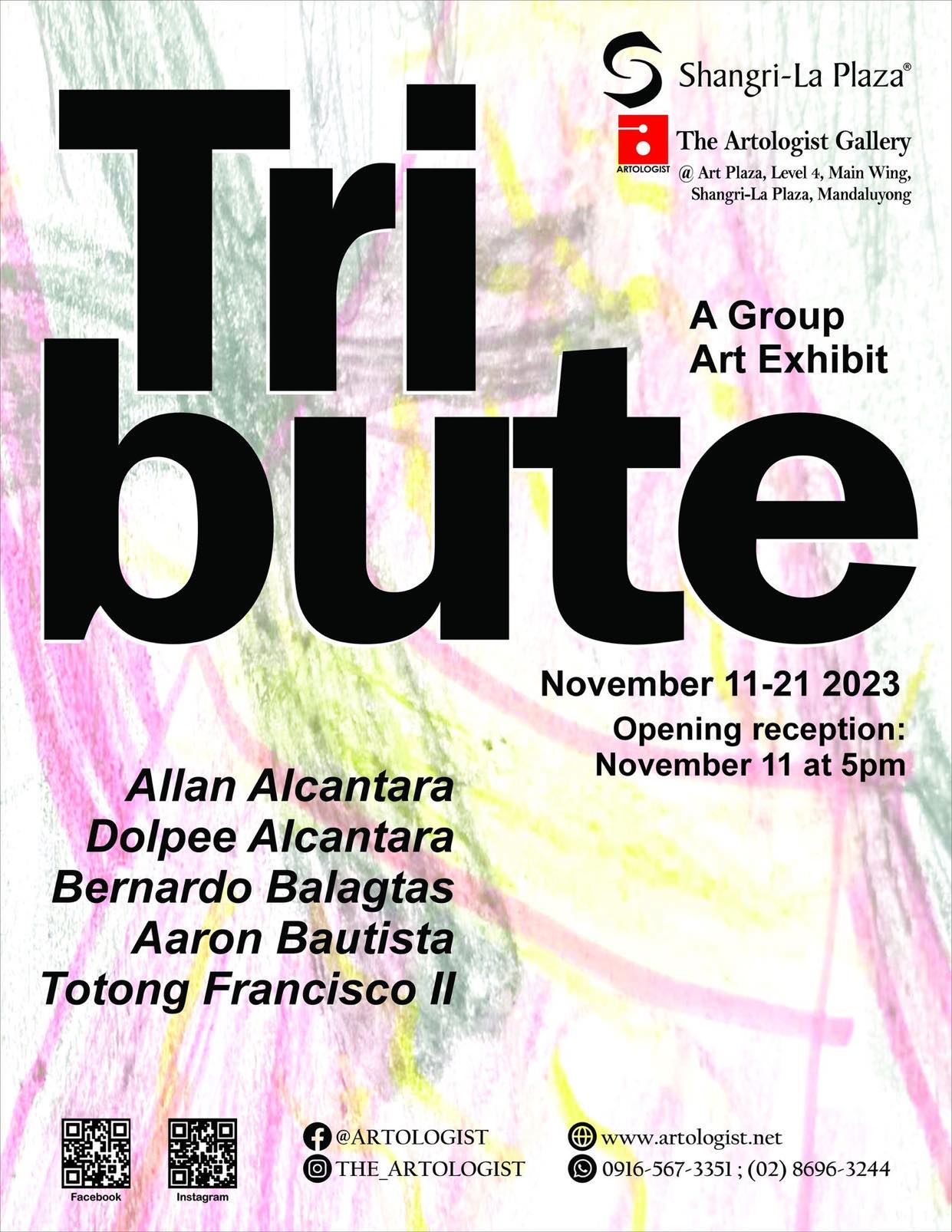
“A Group Art Exhibit”
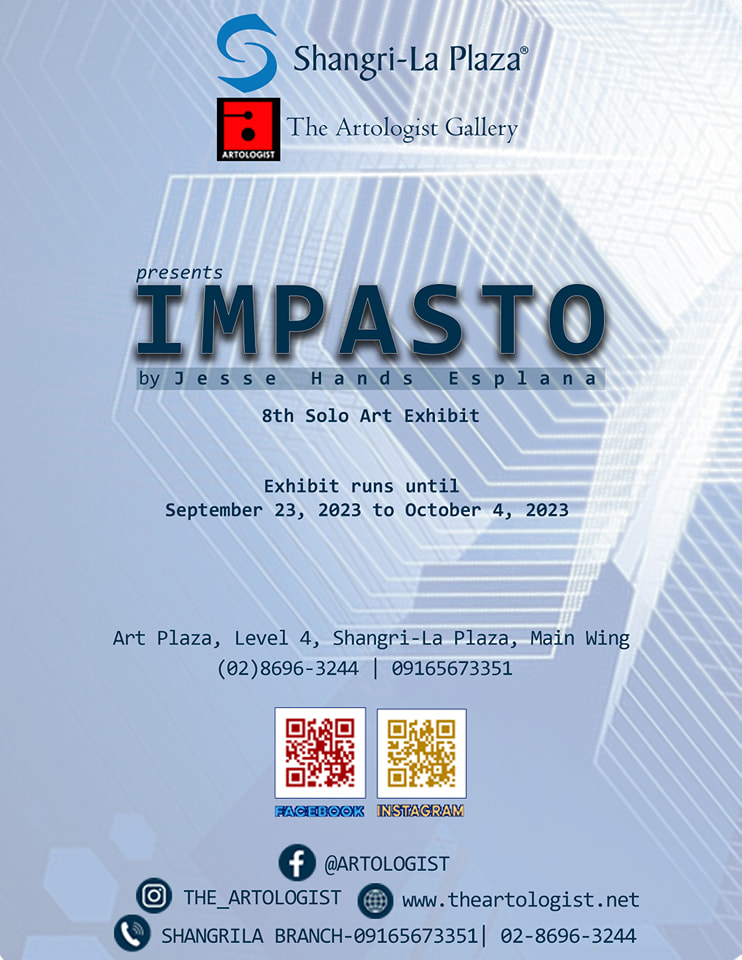
“IMPASTO” Impasto is the technique in which the strokes of a brush or pallet knife are thickened in a painting like the ones in this exhibition. You can see the stroke and every feeling of darkness or light. You can see the strokes of paint that Jesse R. Esplana did and does as a style. He can express his feelings whether he is using a brush or a knife pallet. These are the elements and techniques he used for his painting exhibition. He also describes his feelings in the paintings made. He drew various professions and subjects in his painting that give him inspirations like his drawings of “guitar man” and “jazz man.” These characters give him comfort. We can see in his paintings the joy in the world, thoughts, and feelings. It is derived from his style and can be identified by his paintings and the series of his past painting exhibitions in a similar place. He just continues the painting series he is doing and the exhibition like this so that his paintings can bring joy to everyone who sees them. Some of the images that he made of the series of workers and professionals that he contributed to the complex and will emerge a new town and a new generation of Filipinos that Gat Jose Rizal said are the hopes of the people, these are the new youth of the brown races of the Philippines that we love! May you all live long and may the living God bless you! May the paintings I put together for this exhibition be an inspiration to everyone! Live and God Bless everyone! He is great anytime and forever.
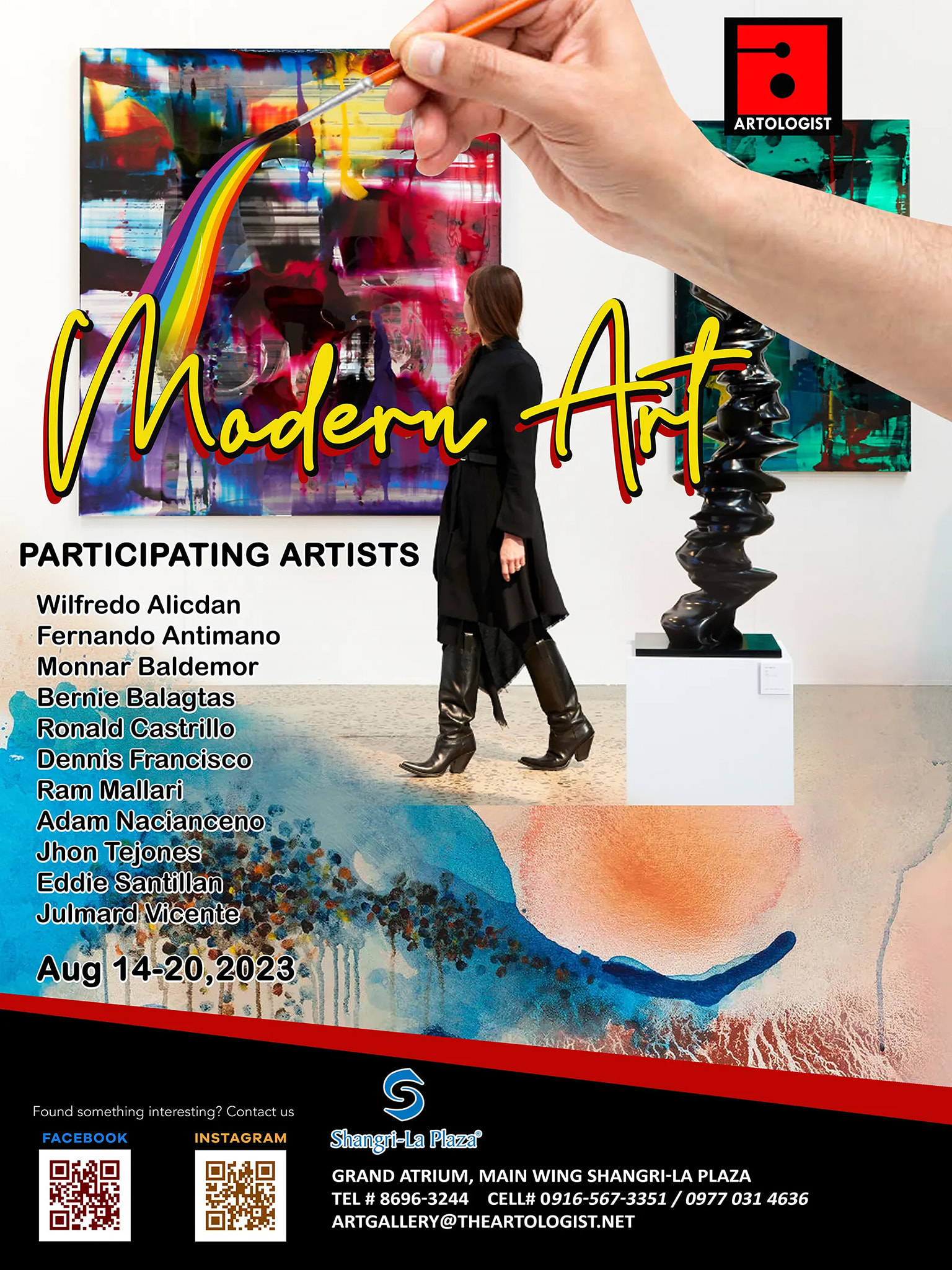
Discover Modern Art Exhibitions
